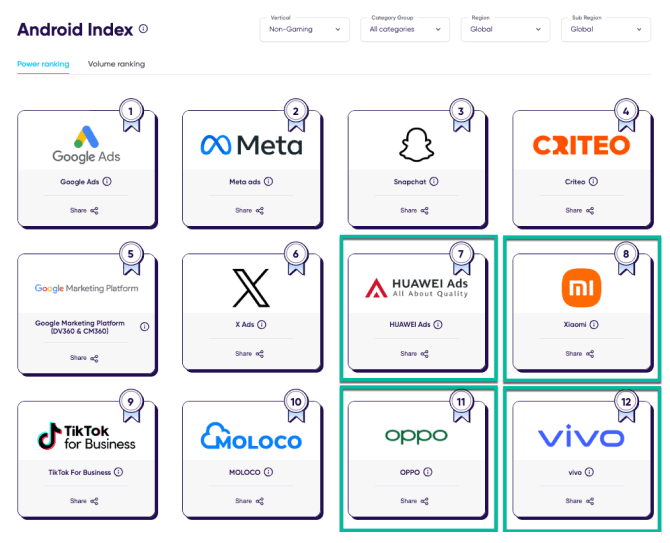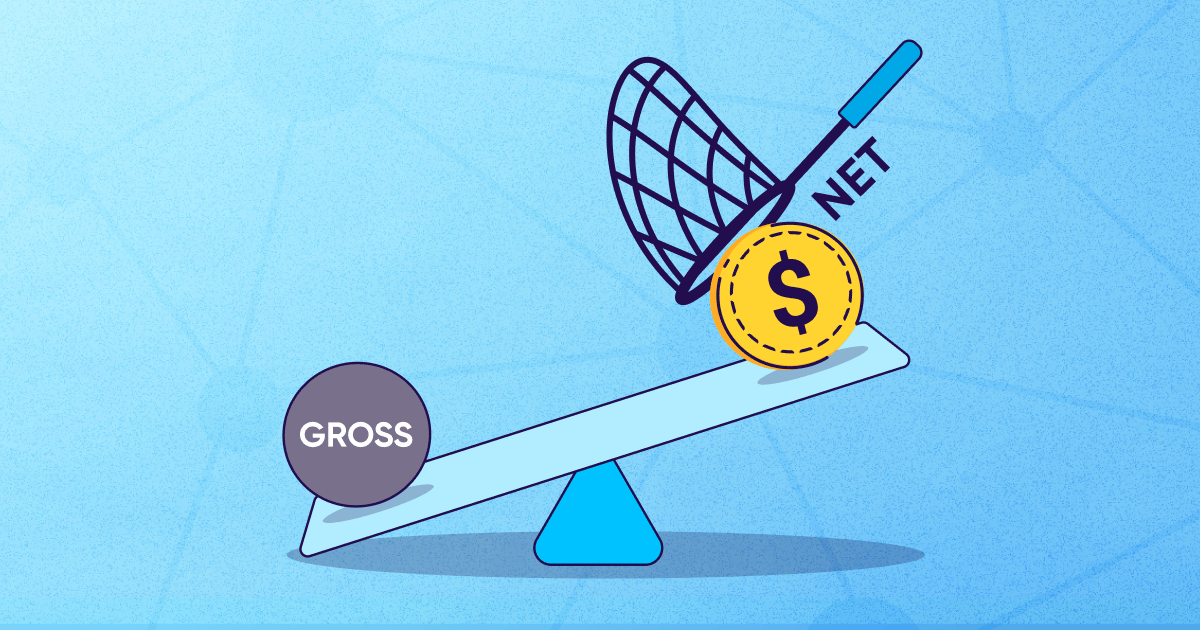
7 Reasons mobile OEMs should be part of every marketer’s growth strategy

In today’s dynamic mobile ecosystem, there is a silent shift taking place. Xiaomi, Huawei, OPPO, Vivo, Transsion, and other Original Equipment Manufacturers (OEMs) are carving out a niche with their alternative app stores, providing marketers and app developers with new business channels.
In fact, the AppsFlyer Performance Index – the industry standard report card on the performance of mobile media sources since 2015 — has four OEMs in the top 12 global power ranking for Android non-gaming apps.

But is mobile OEM advertising just a fleeting trend, or a valuable addition to your mobile marketing mix? Let’s explore this further.
A deep dive into mobile OEMs
Before exploring the advantages, let’s understand what mobile OEMs are. Simply put, OEMs are companies that make mobile smartphones. Beyond hardware, many OEMs have also entered the software market, introducing their own app stores and advertising platforms which are distinct from mainstream counterparts like Google Play.
These alternative app stores have shaken things up — AVOW alone has access to 1.5 billion daily active users through mobile OEM partnerships. Now that the sheer scale of the alternative app store market globally is clear, let’s dive into what makes mobile OEMs such a worthwhile option to consider.
I’m a marketer. Why should I care?
The increasing fragmentation of the app store ecosystem might seem like a challenge, but in reality, it’s full of opportunities. Let’s explain why.
- Global Reach: For brands aiming to penetrate diverse markets throughout the world, mobile OEMs offer significant reach, particularly in Asia and other emerging markets where they offer an important gateway for regional expansion. This trend is also picking up pace in EMEA and LATAM, with several mobile OEMs now operating local alternative app stores in the region, and plans for greater expansion forging ahead. This could be advertising within the launcher, app drawer, native apps, and more.
- OEM Advertising keeps your budget in check: Mobile OEM advertising offers a premium yet cost-effective pricing model. Reduced competition translates to lower user acquisition costs, maximizing return on investment. Another advantage is that mobile OEMs default to a performance-based cost-per-install model, moving away from the traditional cost-per-click model.
- Brand safety and fraud-free traffic go hand in hand: With no additional layers between users and advertisers, mobile OEMs reduce the risk of fraud. As a result, advertisers are finding mobile OEMs to be a trustworthy channel—and an efficient way to spend their budget.
- Extensive targeting: In a commercial era defined by big data, precision targeting is paramount. With their extensive insight into user habits, mobile OEMs allow marketers to craft hyper-personalized campaigns for alternative app stores or the Google Play Store. Such precision both amplifies engagement as well as enhances conversion rates. Moreover, advertisers also have the flexibility to select the download destination for display campaigns. As privacy regulations evolve, the advent of the Open Anonymous Device Identifier (OAID) ensures marketers can maintain their targeted approaches while upholding user privacy.
- Alternative App Store’s dynamic preloads mean users at your fingertips: Imagine a scenario where users turn on their brand-new phone and their first recommended download is your app. The visibility and immediate user base offered by mobile OEMs’ Dynamic Preloads are unparalleled — it’s akin to having a store in the heart of town. Another bonus is that dynamic preloads via Google Play Auto Install (PAI) are sourced directly from the Google Play Store, eliminating the need for your app’s presence on other platforms.
- OEMs are integrated with mobile measurement partners: The backbone of any successful campaign is its analytical prowess, and integration with leading attribution platforms ensures marketers aren’t flying blind. Every decision is data-backed, meaning campaigns evolve in real-time, optimizing for maximum efficacy.
- Monetization and freedom of choice: Accustomed to the monetization strategies of conventional platforms, app developers might view mobile OEMs with skepticism. The freedom of choice that mobile OEMs provide in fact gives app developers the opportunity to choose their own payment solutions and determine how they would like to monetize. To this extent, getting started with alternative app stores is easy. All you need to do is upload your app onto the store, no tweaking or special versions of your app required. OEMs now offer a built-in auto-update functionality, which maintains your app version in line with what has been uploaded to Google Play. With the right tools and guidance, setting up shop across various app stores while leveraging tried-and-tested monetization methods is a cinch.
Are there any challenges with mobile OEMs?
As with anything, mobile OEMs do present several challenges that marketers should be aware of before embarking on this journey.
Fragmentation and choice paralysis of mobile OEMs:
There are many mobile OEMs around, and with that comes fragmentation. Each OEM has its own offerings and strengths, as well as its own alternative app stores. For a mobile marketer dipping their toes into the mobile OEM waters for the first time, it can seem daunting and a little confusing as to which one to choose, or how many of them to go with. This could lead to siloed data sets and campaigns, without a proper holistic overview of the campaign’s performance and metrics. Not all OEMs offer the same advertising options either, potentially leading to more fragmentation.
Understanding mobile OEM market dynamics and geographies:
Not all geos are equal, and some mobile OEMs are stronger in some areas than in others. In Spain, for example, Xiaomi is the top mobile OEM in the country, with over 27% market share. In Indonesia, that top spot belongs to OPPO, at over 17% market share. Xiaomi has recently launched its GetApps alternative app store in Latin America, opening up new markets and avenues for growth and app distribution. To the mobile marketer unfamiliar with these dynamics, much research and industry knowledge is required to understand what works, and where.
Takeaway: Alternative app stores are becoming mainstream
What’s clear is that Mobile OEMs aren’t just a niche. Although their presence in the mobile marketing landscape is evolving, the advantages of alternative app stores are clear and are now part of the mainstream. In fact, at AVOW, integrated Mobile OEM partners dominate 84% of the global Android market share.
In a saturated commercial environment, mobile OEMs also offer brands the chance to stand out and connect with new users through personalized, targeted messaging. This is not about numbers and strategy: it’s about resonating with the end-user.
Mobile OEMs are now part and parcel of the mainstream, and a prime example of why marketers need to keep an eye on the evolution of the industry so they can continue to adapt, innovate, and thrive. In an industry that is constantly innovating, marketers need to be familiar with all the channels on offer, and how best to utilize them. Mobile OEMs and their alternative app stores offer marketers such a channel.




